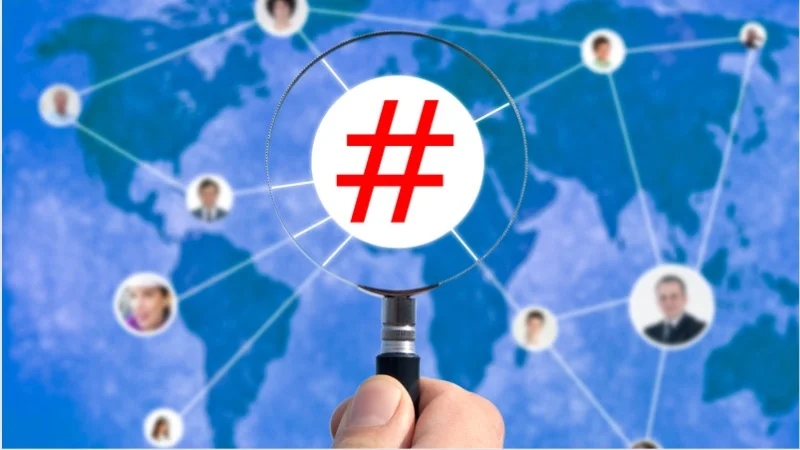The symbol known as “diezes,” more commonly referred to as hashtags or number signs (#), has undergone a significant transformation from its origins in musical notation to its widespread use in modern digital communication. This article explores the history, current applications, and effects of diezes on communication in the digital age.
The Historical Roots of Diezes
Diezes have been used in music for centuries. In musical notation, a diezes (or sharp symbol) is used to raise a note’s pitch by a half step. This fundamental role in music is still relevant today, allowing composers and musicians to convey precise tonal adjustments in their compositions. The sharp symbol’s simplicity and clarity make it an essential tool in the world of music theory and practice.
The Emergence of Diezes in Digital Communication
While the diezes symbol has long been associated with music, its modern relevance stems from its adoption by social networking sites in the early 2000s. The pivotal moment came in 2007 when Twitter introduced the hashtag as a way to categorize topics and facilitate conversations. This innovation, initially proposed by Chris Messina, aimed to streamline the process of searching and joining discussions on specific themes.
The term “hashtagging” quickly entered the digital lexicon, and the practice spread rapidly across other social media platforms, including Facebook, Instagram, and TikTok. The hashtag’s ability to connect users around shared interests, events, and movements transformed it into a powerful tool for communication and organization.
Current Applications of Diezes
Today, diezes are ubiquitous in the digital landscape. Their applications are diverse, ranging from social media campaigns to brand marketing and activism. Here are some key areas where hashtags play a crucial role:
Social Media Engagement
Hashtags are fundamental to social media engagement. They allow users to categorize their content, making it discoverable by a broader audience. By including relevant hashtags, users can join trending conversations and increase the visibility of their posts. This practice is particularly prevalent on platforms like Twitter and Instagram, where trending hashtags can drive significant traffic and engagement.
Marketing and Branding
Brands leverage hashtags to create memorable marketing campaigns and foster community engagement. By developing unique hashtags, companies can encourage users to share their experiences and connect with the brand. Successful hashtag campaigns, such as Coca-Cola’s #ShareACoke or Nike’s #JustDoIt, have demonstrated the power of diezes in building brand identity and loyalty.
Activism and Social Movements
Hashtags have become instrumental in activism and social movements. They provide a rallying point for individuals to express solidarity, raise awareness, and mobilize for change. Prominent examples include #BlackLivesMatter, #MeToo, and #ClimateStrike, which have united millions of people around critical issues and driven global conversations.
Event Promotion
Event organizers use hashtags to promote conferences, festivals, and other gatherings. By creating a dedicated hashtag, they enable attendees to share their experiences and connect with others. This not only enhances the event’s visibility but also fosters a sense of community among participants.

The Impact of Diezes on Communication
The proliferation of diezes has had a profound impact on how we communicate in the digital age. Here are some key effects:
Enhanced Discoverability
Hashtags enhance the discoverability of content by categorizing it under specific topics. This allows users to find relevant information quickly and join conversations on subjects of interest. The ability to search and follow hashtags has made social media platforms more dynamic and user-friendly.
Community Building
Hashtags facilitate the formation of online communities. By connecting individuals with shared interests, they create spaces for dialogue, support, and collaboration. Whether it’s a niche hobby or a global movement, hashtags enable people to find and engage with like-minded individuals.
Amplification of Voices
Hashtags amplify voices that might otherwise go unheard. Activists and marginalized groups can use hashtags to draw attention to their causes and reach a wider audience. This democratization of communication has empowered individuals to advocate for change and hold those in power accountable.
Real-Time Participation
In the age of instant communication, hashtags enable real-time participation in events and discussions. From live-tweeting conferences to sharing updates during crises, hashtags allow users to stay informed and contribute to unfolding narratives.
Data and Analytics
Marketers and analysts use hashtag data to gain insights into trends, sentiment, and audience behavior. By tracking the performance of hashtags, they can measure the effectiveness of campaigns and adjust their strategies accordingly. This data-driven approach has revolutionized the fields of marketing and public relations.
The Future of Diezes
As social media continues to evolve, so too will the role of diezes. Emerging technologies and platforms may introduce new ways to utilize hashtags, further enhancing their functionality and impact. Additionally, the integration of artificial intelligence and machine learning could refine hashtag recommendations, making it easier for users to find relevant content.
However, the widespread use of hashtags also presents challenges. The sheer volume of hashtagged content can lead to information overload, making it difficult to filter through the noise. Additionally, the misuse or overuse of hashtags can dilute their effectiveness and lead to spammy behavior.
Conclusion
Diezes have come a long way from their origins in musical notation. Their transformation into a symbol of digital communication reflects the dynamic nature of language and technology. Today, hashtags are indispensable tools for categorizing content, fostering engagement, and driving social change. As we look to the future, the continued evolution of diezes will undoubtedly shape the way we connect and communicate in the digital age.









